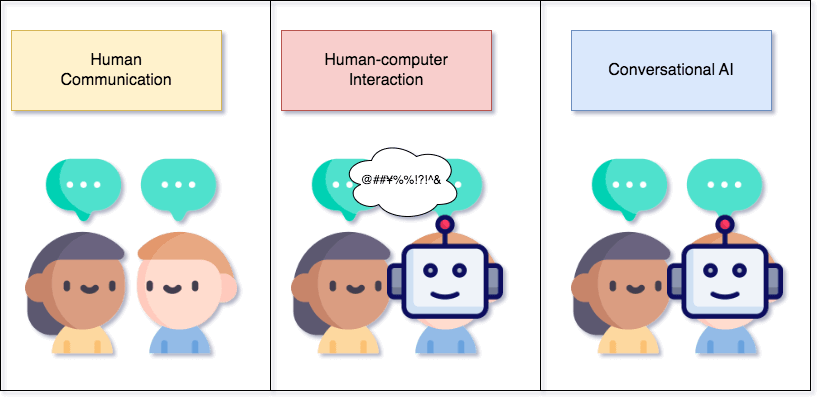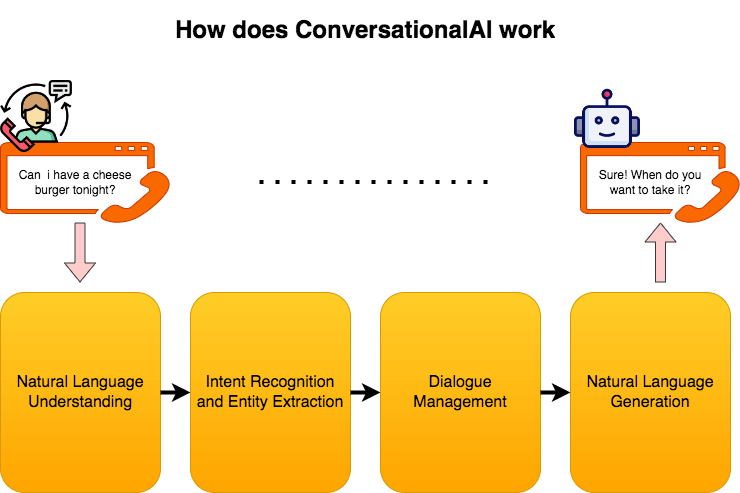Conversational AI is a remarkable application of artificial intelligence (AI) that enables machines to engage in human-like conversations. It achieves this feat through the power of Natural Language Processing (NLP), a specialized field of AI that focuses on understanding and processing human language. By analyzing text and speech, Conversational AI systems generate appropriate and contextually relevant responses, mirroring human-like interactions.

How does Conversational AI work?
Conversational AI’s magic lies in its sophisticated architecture, trained on vast amounts of data, including text and speech. Through this training process, the system learns to comprehend and process human language effectively. As users interact with the AI, it continuously learns from these interactions, refining its responses and enhancing its capabilities over time.
Now, let’s take a closer look at the key components that make Conversational AI work seamlessly:

Natural Language Understanding (NLU)
- The journey of a conversation begins with the user providing input, which can be in the form of text or speech.
- NLU acts as the first step in the Conversational AI process. It diligently analyzes and interprets the user’s input, seeking to understand the user’s intent and extract relevant information from the provided text or speech.
- Tasks involved in NLU encompass language parsing, entity recognition, sentiment analysis, and intent classification. Through these processes, the AI gains a comprehensive understanding of the user’s message.
Intent Recognition and Entity Extraction
Once the user’s input is comprehended, the system identifies the user’s intent, which represents the purpose or goal behind the conversation. By discerning the intent, the AI gains valuable insights into what the user is trying to achieve.
Additionally, the system identifies entities, specific pieces of information within the user’s input that are essential for fulfilling the user’s intent. For instance, in a pizza order query, the intent might be “choose pizza size” or “choose a topping,” and the corresponding entities could be the desired pizza size and toppings.
Dialogue Management
With a clear understanding of the user’s intent and entities, the dialogue management component takes the stage. It is responsible for determining the most appropriate response or action based on the current context of the conversation and the user’s intent.
To maintain coherent interactions, dialogue management keeps track of the conversation flow, making sure that the AI remains responsive and contextually aware throughout the conversation. State machines, decision trees, or advanced approaches like reinforcement learning may be employed in this process.
Natural Language Generation (NLG)
After processing the user’s input and determining the appropriate response, the Conversational AI system generates a natural language response to communicate with the user.
The NLG component converts structured data or machine-readable information into human-readable language, allowing the user to easily understand and engage with the AI.
Conversational AI has rapidly become an integral part of our lives, revolutionizing customer service, personal assistants, and countless other applications. Its ability to simulate human-like interactions has opened up new possibilities in user experience and engagement. As technology continues to advance, Conversational AI holds the promise of reshaping industries, providing more seamless and intelligent interactions between humans and machines. With further advancements, we can look forward to a future where Conversational AI becomes an indispensable tool, enhancing our daily lives in ways we can only imagine.